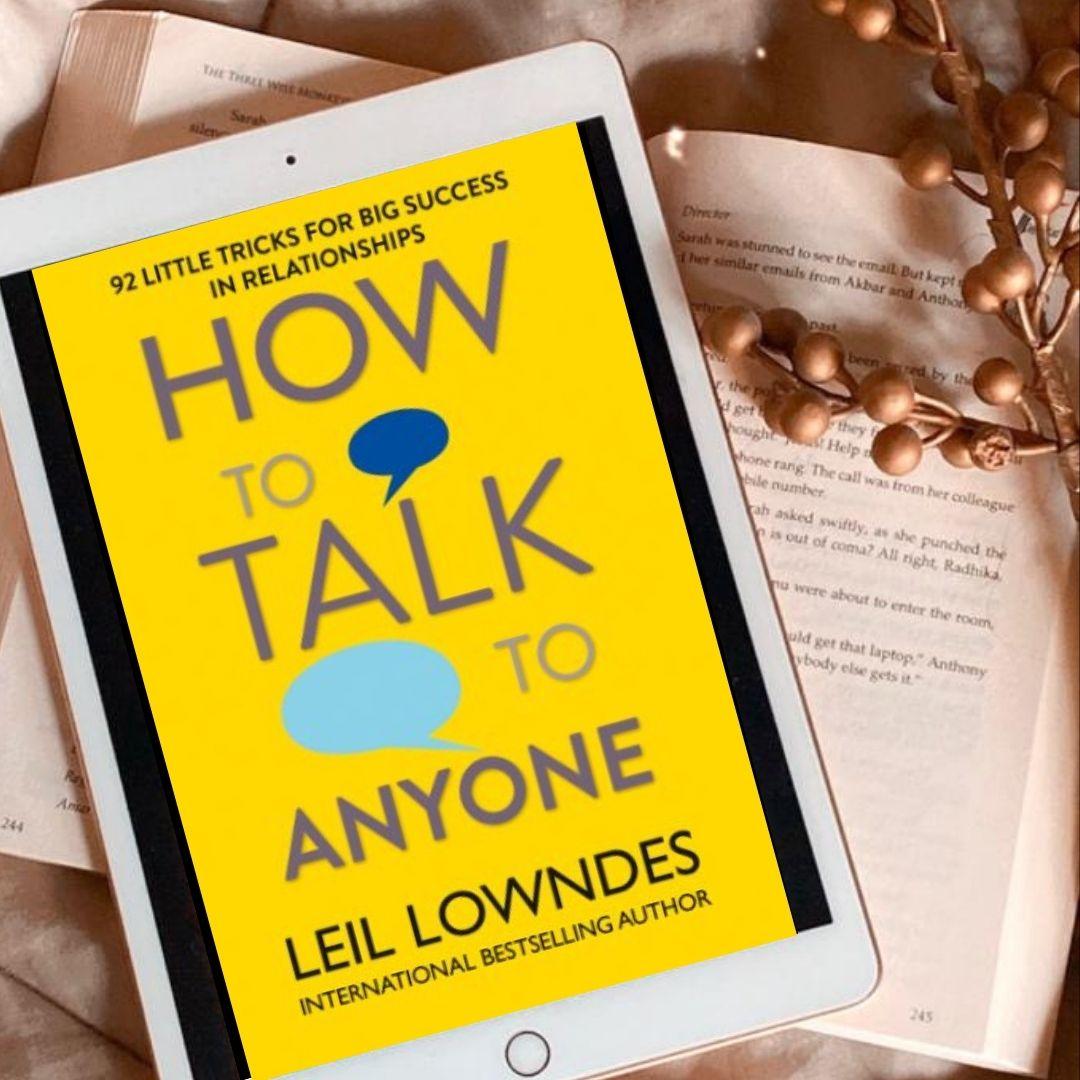In a world where interpersonal skills can make or break relationships, both personal and professional, understanding the nuances of communication is vital. Among the many resources available for enhancing conversational abilities, “How to Talk to Anyone” stands out as a beacon of insight and practical advice. This book endeavors to equip readers with the tools they need to navigate the complexities of human interaction. Here, we delve into various insights and techniques the book offers, reflecting on the multifaceted content one can expect.
The author begins by addressing a universal truth: effective communication is an art. It is not merely about exchanging words but understanding the underlying emotions and contexts that shape interactions. The book is structured around practical techniques and strategies that can be employed in diverse social settings. Readers can expect a treasure trove of tips designed to enhance their conversational prowess, bolster confidence, and foster genuine connections.
Each chapter explores a specific aspect of conversation, from initiating dialogue to maintaining engaging exchanges. The author illustrates the importance of body language, emphasizing that non-verbal cues often speak louder than words. For instance, a warm smile or direct eye contact can significantly impact the first impression one makes. The subtle integration of anecdotes and real-life examples throughout the text serves to solidify these concepts, making them relatable and easily digestible.
Readers will find a variety of strategies for breaking the ice with strangers or even acquaintances needing a deeper connection. The book provides a plethora of open-ended questions designed to elicit thoughtful responses while inviting others to share their stories. This not only keeps the conversation flowing but also allows for the cultivation of empathy and understanding, essential components of meaningful relationships. Techniques such as mirroring and validating feelings—parallel to the practice of active listening—are introduced, encouraging an authentic exchange of ideas.
Moreover, the author delves into the realm of small talk, an often-overlooked aspect of social interaction. While some view small talk as trivial, the book argues it serves as a gateway to deeper discussions. By mastering the art of light banter, individuals can create a comfortable atmosphere conducive to more substantial conversations. The author’s advice on situational awareness—being attuned to context and social cues—enables readers to tailor their dialogue appropriately, thus enhancing their conversational skills.
In the following chapters, the subject of social dynamics takes center stage. The book discusses how to navigate differing personality types and communication styles, prepping readers for interactions in both casual settings and formal environments. Further, the author emphasizes the significance of adapting one’s approach depending on the audience, whether it’s a nervous colleague or a charismatic stranger. Reading the room, so to speak, is an invaluable skill that the book articulately conveys, reinforcing the idea that adaptability is key in effective communication.
For those readers who may grapple with shyness or social anxiety, the book provides practical strategies to build confidence. Techniques such as visualization and positive affirmation are intertwined with cognitive behavioral strategies to help individuals overcome their fears and foster resilience in social interactions. The book encourages readers to embrace vulnerability, as it often begets trust and friendship—a refreshing perspective that resonates with many.
The theme of authenticity is recurrent throughout the text. The author invites readers to embrace their individuality and share their true selves during conversations. This vulnerability transforms mundane exchanges into profound connections, providing a foundation for lasting relationships. Authenticity acts as a magnet, drawing people in and allowing for a more genuine discourse. The empowerment that stems from self-acceptance fuels confidence, enabling smoother and more enjoyable interactions.
Transitioning from personal insights to practical application, the book includes engaging exercises that challenge readers to practice their newfound skills. These activities encourage reflection and active participation, ensuring that readers not only process the information but also integrate it into their daily lives. The commitment to practice fosters improvement—something that resonates deeply with the author’s philosophy: communication is a skill developed through perseverance.
As readers move through the pages, they will encounter a segment dedicated to the art of persuasion. The author elucidates techniques for convincing others without coercion, emphasizing clarity and respect. By understanding the motivations of others, one can navigate discussions with finesse and inspire collaborative solutions. This delicate balance of influence and integrity forms the crux of ethical communication and is crucial in personal and professional realms alike.
Interestingly, the book also addresses digital communication—a significant concern in today’s tech-centric society. It touches on nuances specific to virtual interactions, offering guidance on how to maintain rapport and connection through screens. As one traverses this digital landscape, the principles of effective communication still apply, albeit with a modern twist. Navigating this terrain is essential, especially in a world where virtual interactions are increasingly prevalent.
In summary, “How to Talk to Anyone” is more than a mere compendium of social techniques; it is a comprehensive guide to understanding and mastering the art of conversation. Readers can expect a diverse range of content, from foundational strategies to advanced skills, all rooted in authenticity and relatability. The author’s enthusiastic and insightful approach makes the text accessible and enriching for individuals seeking to enhance their communication abilities. Whether one is an experienced conversationalist or a budding social butterfly, this book offers valuable perspectives that can transform everyday interactions into memorable exchanges.
As we navigate a world intricately woven with dialogues, this book serves as an invaluable companion, encouraging readers to embrace the beauty of connection through communication. Dive into its pages and unlock the secrets to talking to anyone, anywhere, anytime!
